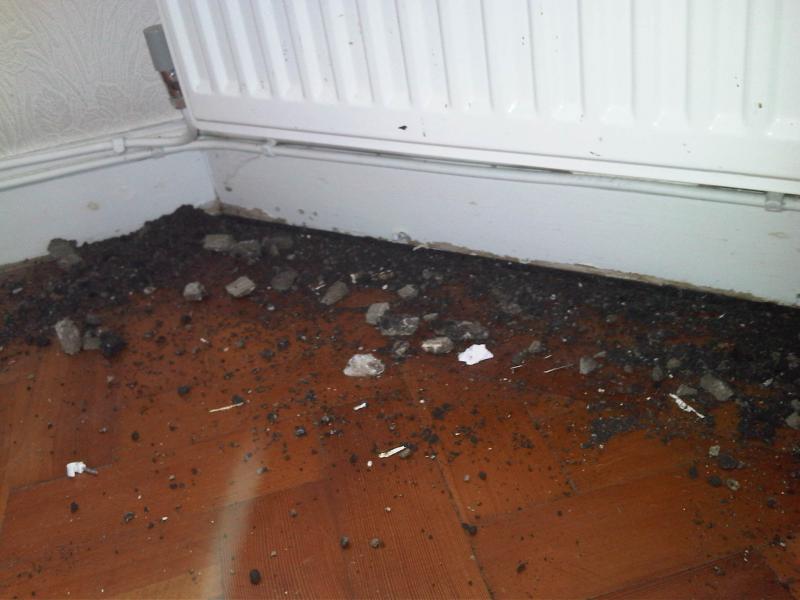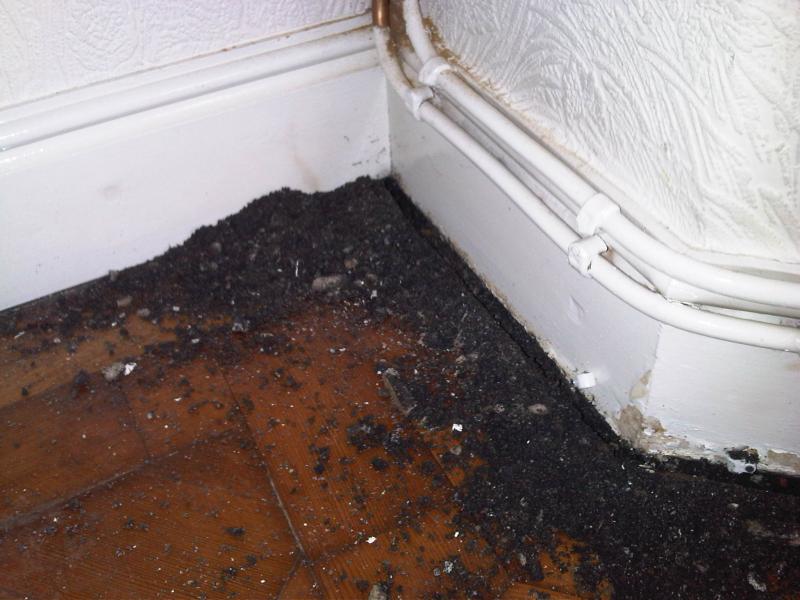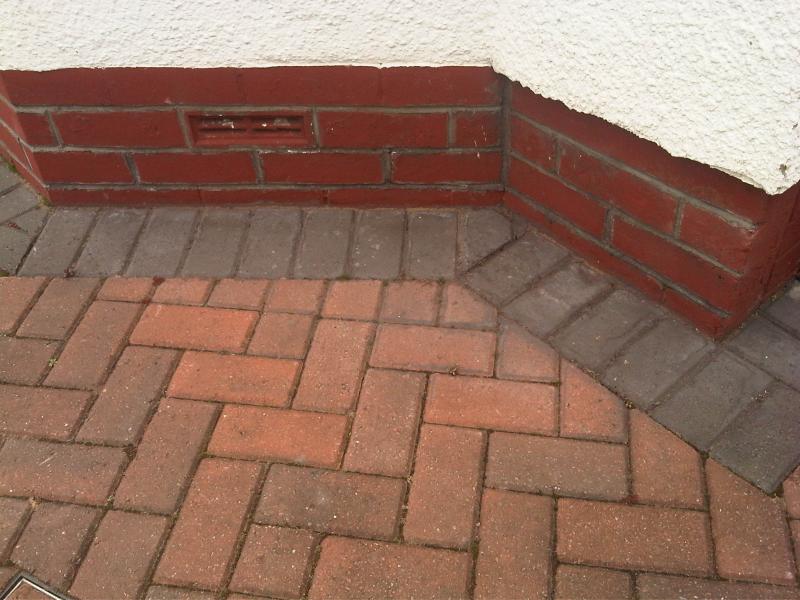Hi
Just wondering what to make of the following please - the skirtings in the front two bays of my bungalow are rotten, the house is circa 1930's.
This dirt has been removed from behind the skirtings, and even though it hasn't rained for a few days (maybe a bit but nothing heavy) this material is damp to touch and smells damp too.
The big grey bits are concrete that was put in to block the gap up between the parquet floor and the bottom of the skirting, where the floor slab has settled away from the wall (Surveyor said this is longstanding).
The parquet is mounted to the floor on bitumen, and the DPC (bituminastic) is approx 2.5 inches above the concrete floor or at approximately the height of the top of the parquet bricks.
Pointing on the outside of the bays has been done about 6 weeks ago. The ground level (block) is 6" beneath the exterior DPC.
I'm clearing out the dirt to let it breath and dry up, before moving forwards and replacing the skirtings.
In the meantime i just wondered if anyone had any thougthts on what could cause this.
Thanks
Mike
Just wondering what to make of the following please - the skirtings in the front two bays of my bungalow are rotten, the house is circa 1930's.
This dirt has been removed from behind the skirtings, and even though it hasn't rained for a few days (maybe a bit but nothing heavy) this material is damp to touch and smells damp too.
The big grey bits are concrete that was put in to block the gap up between the parquet floor and the bottom of the skirting, where the floor slab has settled away from the wall (Surveyor said this is longstanding).
The parquet is mounted to the floor on bitumen, and the DPC (bituminastic) is approx 2.5 inches above the concrete floor or at approximately the height of the top of the parquet bricks.
Pointing on the outside of the bays has been done about 6 weeks ago. The ground level (block) is 6" beneath the exterior DPC.
I'm clearing out the dirt to let it breath and dry up, before moving forwards and replacing the skirtings.
In the meantime i just wondered if anyone had any thougthts on what could cause this.
Thanks
Mike




